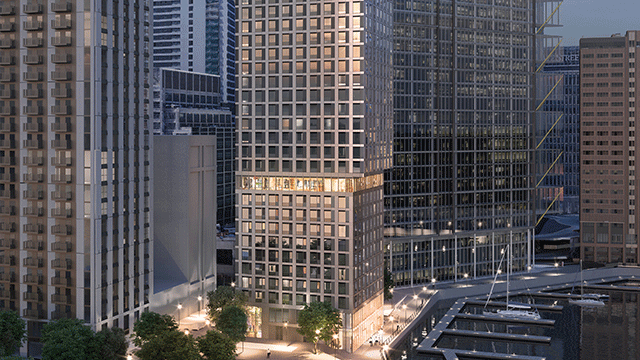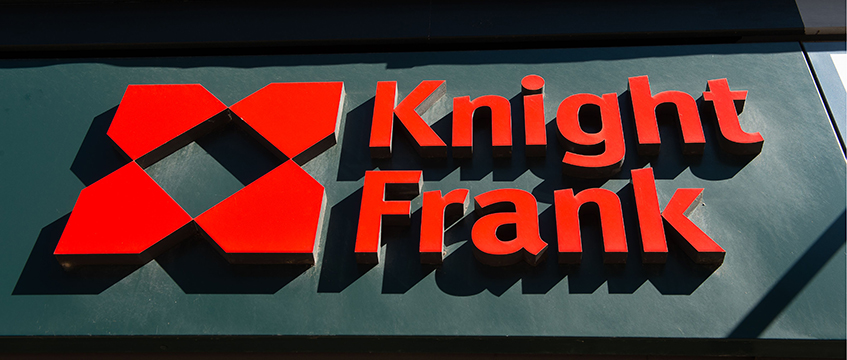The plight of many of the UK’s town centres and high streets has been well documented over the past decade. Retail has increasingly become the most important part of this complex puzzle. Several independent and government-led inquiries have attempted to tackle the symptoms that have stifled productivity, increased retailer insolvencies and work to escalate vacancy rates, with limited success.
The loss of household retail names, concerns about jobs and fears around the future of communities after years of austerity, have peaked as we have moved into the 2020s.
This, of course, has not been an ordinary year. In a time where all of us have had to readjust one way or another to new norms, the value that we place on some of our most cherished places has been exposed. Cities and towns have been shut down for prolonged periods; otherwise vibrant destinations where people come together to work, shop and share lived experiences have been left void of life.
The pandemic cannot be blamed for the ill health of town centres, but it has magnified and accelerated the rate at which obsolescence is permeating the UK’s high streets.
Urban environments adapt to our evolving needs. Myriad factors, our own habits included, have already been coalescing to harm one of the key components to our community destinations: retail space.
Economic, structural and consumer-led shifts have simultaneously hit – and at speed. Much has been written about the future of the retail sector, yet the swift acceleration of many of the changes bestowed upon it means lasering in on those critical areas of evolution is imperative.
Spaces that are no longer fit for purpose act as visual scars on a community, and persistent vacancy can be attributed to local economic distress. Empty retail premises must be retrofitted and transformed into spaces that add social value and generate cultural capital for the communities they serve.
This investigation seeks to highlight the various challenges currently faced by occupiers, landlords, town planners and investors; specifically focusing on retail real estate. With most experts agreeing that the UK is oversubscribed with surplus retail stock, questions linger regarding what to do with ever increasing voids. Using analysis from Radius Data Exchange and other sources, we will underline the evidence that shows the movement of travel in the sector; how the reanimation and repurposing of physical space will shake out, and how the wider real estate ecosystem might be affected. We will assess whether our lived experiences in 2020 will serve to insulate the retail sector in coming years through a rebirth of localism, or act as a final nail in the coffin, accelerating failures on the high street.
The economy and consumer habits
One of the reasons for the vast swathes of retail stock being released is down to a change in consumer habits. A move to increased levels of online retail spending, combined with increasing amounts of disposable income being spent on experiences, rather than “stuff”, could be described as the first wave in a tsunami that has sucker-punched physical stores.
Despite evolving spending habits, the overall trajectory of retail sales continues to move upward in terms of pounds spent. Office for National Statistics data shows that even in 2020, retail sales have remained extremely robust. Indeed, comparison of the first three quarters of this year with last year shows that overall sales volumes are up by 1.35%. A flood of spending in the weeks after the first national lockdown period ended means that Q3 spend was the highest for a third-quarter since records began.
Despite varying levels of lockdowns up and down the country, concerns surrounding future employment and a third of the country’s workforce, at times, on furlough, the public has continued to use retail as a source of therapy in these unfamiliar times. With the majority of retail closed, these figures are proof that our spending habits are being dictated through different channels.
The past decade has changed our expectations of the shopping experience. In 2010, some 7% of retail spend came through the internet. That figure has since trebled to reach 21% last December, and before the onset of the pandemic, analysis of annual growth by quarter showed that this penetration was slowing. In 2020 we have seen new record highs for the percentage of retail sales coming online. In the immediate wake of the national lockdown, average retail spend online jumped from a baseline of 20.3% throughout Q1 to a whopping 31.4% in Q2. Analysis of the Office for National Statistics data sets shows that this equates to an additional £8m being spent that quarter, pushing online spend up to £27.7m for the months of April to June. The devil makes work for idle hands; consumers using additional disposable income saved from doing less filled excess time with an online shopping frenzy. This is another area where Covid-19 has acted as the great accelerant. Pre-pandemic, many industry experts anticipated that online spend could reach 30% within the next few years. It has done so in the space of a single quarter. It is hard to say if those figures will remain quite as lofty as we tentatively exit the national restrictions in 2021, but it is likely that they will stabilise somewhere above where we were before. This in isolation will not bring about the death knell for shops. Successful retailers have been embracing multi-channel operations for many years and, indeed, there are some that do not trade online at all. What this will do is pile pressure on those occupiers that are unable to find the balance in their business models to deal with this increasing trend away from physical stores.
Footfall had traditionally been used as the litmus test for successful place. While footfall is a complex tool for comprehending if a high street or shopping district is a “success”, at a base level, fewer consumers means fewer people spending. Unsurprisingly, there have been some historic lows in footfall, as the country was told to “stay at home”.This is not a useful indicator. What is, though, is how quickly certain places can return to normal levels of footfall.
Data from Springboard shows that August footfall in some market towns was 26% lower than the same period last year. Yet in UK regional cities (excluding London), footfall was 35% lower. In London the picture was even worse – some areas at 60% lower than the same period last year.
Cities have been the hardest hit in terms of a return to normal footfall levels, not surprising given the percentage of the workforce that is currently working from home. A knock-on effect of a reduction in white-collar workers moving through city areas is that the retail element will suffer. The flipside is that towns that house a higher proportion of office workers will benefit from additional footfall, with former commuters now shopping and working from home.
Cities are not only made up of a commuting workforce, their resident populations have a considerable effect on the success of the micro economy. Data from Centre For Cities shows a polarisation in which places (and residents) are spending increasing amounts of money through the internet compared with through physical stores.
In September, 29% of spend in Cambridge and 27% of spend in London was online – above the national average of 25%. While in Burnley and Bournemouth, online spend represented 19% and 20% of total retail spend, respectively. Could a polarisation of towns and cities by disposable income levels serve to influence the success or failure of physical retail? The data certainly seems to indicate that areas with relatively lower levels of disposable income are less likely to spend as much online as their wealthier counterparts.
The physical environment
Most of the retail stock in the UK was built before the advent of the internet, with little thought about the increasing volumes of sales that would one day come through online channels. This, combined with decades of retailer growth being allied to increasing the size of store portfolios, and resulting investment into expansion and building out of new retail stock, has created a weakening demand for space. Combine this with a steady increase in business rates, and upward-only rents and the future of physical retail space has quite evidently been a cause for concern for some time.
Because of this, retail premises are flooding the market. Some occupiers are consolidating their overall portfolios, others are exiting stores in a more acrimonious way, through administrations and, increasingly, CVAs.
Figures from Radius Data Exchange show that since the start of 2018 more than 27m sq ft of retail and food & beverage space has been vacated due to CVAs, administrations and traders no longer able to operate. The forced closure of many during the first national lockdown served as the final blow, accelerating an otherwise slow journey from “hanging in there” to insolvency. So far, more than 2,000 individual shops and eateries have been shuttered since the beginning of the year.
Figures from Local Data Company go some way to highlighting the current rate at which retail premises are emptying out. Vacancy rates across shopping centres, retail parks and high streets all increased in the opening six months of this year. Shopping centres’ lack of “essential retail” has meant the majority of units within those schemes have been unable to trade during lockdown. High street vacancy, while still trending in the wrong direction (+0.4% H2 2019-H1 2020), is comparatively flat compared with out-of-town retail parks (+0.7%) and larger shopping centres (+0.6%) – an indicator of the effect of localism that has seen an outpouring of public goodwill go towards local independent traders.
However, increasing levels of empty units can be misleading in the grand scheme of retail occupation. A more precise metric to help understand the effect of retail closures is to look at the net change of combined closures and openings. Local Data Company analysis shows the overall net change has been trending in the wrong direction for a number of years. An acceleration at the start of 2017 has culminated in the worst six-month period since 2014, in terms of overall net closures, down almost 8,000 stores in H1 2020.
Of those units that do remain empty, there are some interesting patterns that emerge when dissecting the data by retail type. Shopping centre units are more likely to be empty for longer than retail park and traditional high street stores. Scheme owners may find more severe, long-term structural challenges in the future, especially as the repurposing of units becomes even more commonplace. The fact that high street units are being reoccupied more quickly than other sectors is at least a positive trend for town centre stakeholders.
Increasing vacancy is already having an effect on the lettings market. Analysis from EG Propertylink shows the number of individual retail properties coming to market in 2020 is already 40% up on the record set in the previous year, with more than 7,500 units. This figure is some 77% higher than the last low of 1,477 units in 2017 and is expected to continue to increase in line with growing consolidation in the sector.
These indicators run concurrently with the fact that, on the whole, retailers are signing up for less physical retail space than they once did. Radius Data Exchange analysis shows this trend in action. The previous two years have seen gradual yet sustained periods of reduced commercial take-up in the retail sector. It remains to be seen whether there is a marked increase throughout the second half of this year, but in all likelihood businesses will be taking stock of current financial circumstances, with an eye on the looming recession, and deciding whether to stick or twist.
As occupiers continue to assess their physical space in an age of increasing online spend, the value of space is coming under increasing scrutiny. Radius Data Exchange analysis shows that not only have average lease lengths for retail space tumbled by 28% in the past decade, but average rents per square foot have come down by an average of 27%. Occupiers need less space and want to pay less for it.
The flux in supply and demand in the market at present means there are increased chances of favourable negotiations for occupiers. Retail and leisure landlords are facing a flood of lease expiries over the next five years that could see close to 1bn sq ft of space and thousands of over-rented assets released back to the market.
Analysis using Radius Data Exchange shows that almost 65% of retail and food & beverage leases signed since 2015 will expire or have lease breaks between now and 2025, potentially delivering some 975m sq ft back to landlords. Additional analysis of EG’s data shows that one-third of retail and leisure units that have a lease event due over the next decade are over-rented. Landlords heavily exposed to fashion and food & beverage face the biggest risk, with these two tenant types representing some 35% of the lease expiries coming in the next five years.
As the value that occupiers place on space decreases, it suppresses appetite in the real estate investment market. The drop in values in retail real estate have been dictated by bottom-up shifts from consumer to retailer, based on how much occupiers actually need space.
Investment into retail real estate has plummeted in the face of the pandemic and an expected deep recession. Radius Data Exchange analysis shows this year marks the worse for investment volumes since 2008, down by 48% on the total achieved at the beginning of the global financial crisis. Investment volumes are down by 70% on last year’s totals (with Q4 left to go). The revaluation of retail real estate has been compounded by investor inertia in the wake of the first national lockdown. With average rents and lease lengths tumbling, as well as accelerated consolidations, real estate investors remain cautious in the retail sector.
In a suppressed market, one particular sub-sector that has been relatively acquisitive has been local authorities. Despite having their funding slashed by 49% since 2011, according to the National Audit Office, local authorities have drawn on capital reserves and debt to start buying commercial real estate assets within and outside their own jurisdictions. Some £8.2bn has been spent on commercial real estate by local authorities since 2013, according to Radius Data Exchange, with £2.6bn being spent on retail assets. Local authorities have typically invested in service and value-led shopping schemes and parades, either to create a revenue stream, or to redevelop for community need.
In recent years, the structural landscape has transformed. Empirical evidence shows there is an oversupply of space throughout the UK, born from a reducing demand for stock from occupiers. The fears are that with such a rapid pivot away from A1 uses, swathes of high streets, town centres and shopping centres will suffer economic stagnation. Obsolescence is a real issue – the solution must lie in successful repurposing of stock.
Repurposing retail
Radius Data Exchange planning analysis reveals the number of applications for change of use away from retail (A1) has been tumbling since 2017. In fact, change-of-use applications are down by 44% so far this year, albeit with two months of the year left in terms of collected data. In isolation that is not surprising. Many mooted plans for change of use may well have been paused as a reaction to ongoing lockdowns. It is more surprising that the figures have been falling in recent years, not rising, given the increasing amount of retail stock that is coming to the market.
Fragmenting those change of use applications since 2014 shows some familiar trends. One in three have been for change of use to food & beverage (A3). While restaurants experienced a relative boom period in the first wave of retail consolidations in the mid-2010s and took advantage with a raft of openings in high streets and shopping centres, their numbers plateaued and reached “peak restaurant” in around 2017. The annual slowdown in change-of-use applications may well be because of this reversing trend. With the food & beverage market saturated, fewer retail units are converted to eateries. It cannot be because there are fewer retail units available to convert.
The data shows that applications are increasingly likely to be permitted, and at a faster rate too. In 2014 the average days to permission for a retail premises to other uses stood at 143 days – that figure stands at 78 days in 2020, almost halving. Permission rates had been increasing year on year up to 2018, peaking at 76%. That figure has since dropped slightly this year to just north of 50%.
Retail to resi
Another trend that has become more apparent is the move to convert shops into homes, with change-of-use applications to residential doubling over the past five years, according to Radius Data Exchange. The figures show 27.7% of all change-of-use applications to residential in 2019 were for high street retail space, up from 13.9% in 2014. That figure has dropped in 2020, in line with all other planning indicators, but with the future of our town centres under the microscope, and the traditional retail offer failing to attract footfall as it used to, conversions away from retail are becoming more common. The shortage of land in urban areas has seen residential developers come into direct competition with other real estate sectors, most commonly locking horns with those in the industrial and logistics space seeking plots for last-mile distribution hubs. But it is not just on the high street where this transformation is occurring. Many of the big retail REITs are now looking at repositioning their retail destinations by supplementing shopping centre schemes with additional housing elements while simultaneously reducing the retail offer.
New retail
The amount of new retail space being applied for, as well as permitted, has been decreasing since 2016, and in 2020 numbers have fallen even more starkly. Permission rates have dipped below 50%, with overall application numbers down by 70% on 2016.
The main use types being applied for are food & beverage units – with a large proportion of these lodged during the aforementioned F&B boom – and standalone shops. New applications for shops will have seen a spike in supermarket and food store occupiers.
Radius Data Exchange figures show a boom in out-of-town applications, which have almost doubled over the past five years. Out-of-town retail has become attractive for several reasons: cheaper land for developers and investors, cheaper rents and bigger premises for occupiers; and easy and cheap accessibility for consumers. These continued and sustained pressures on our central shopping areas have worked to further damage once-healthy retail environments. However, this boom may well be nearing its end, with applications for new retail parks slowing over the past two years.
State of flux
Physical retail is in a state of flux. There is too much space in the market and consolidation will continue as retailers continue to balance lofty rents and rates with online sales penetration. The pandemic has layered on an additional dynamic to this evolving relationship. Will we return to offices and cities at the same rate at which we once frequented them? Will we work five days a week? And if not, who and where are the winners and losers? Which places will benefit from retention of residents? Which areas might suffer as they lose out on reducing levels of commuter spend? Without a crystal ball it is impossible to tell, and at this point we really don’t know the lasting impacts of this virus. However, there are several indicators which suggest a step change in the fortunes of local economies throughout the UK.
By looking at how many office employees live in a particular local authority, compared with where they work, we can gauge the effect that a lack of commuting in and out of satellite towns into central urban hubs will have, and begin to separate out potential winners and losers.
The chart below indicates which local authorities we are loosely defining as potential winners. This is by looking at which local authorities currently have the highest availability rates (defined by actively marketed properties against amount of actual stock). An increase in home-based office workers should boost the local economy, as their time and money are not leaking via the daily commute to a different locale.
The chart underneath that shows that hypothesis in reverse, highlighting those that could be classed as relative losers – which in this instance we define as local authorities that have the lowest retail availability rates but traditionally benefit the most from white-collar workers. Those areas that benefit from high levels of commuting workers and already have a substantial footprint of successful retail built around this model look set to potentially struggle.
If working from home is to become an ingrained part of employment culture, then city centre areas could be harder hit by retail losses than town centres. That is not to say that all retail in satellite towns is now insulated from the issues that face retail space, but that an increased percentage of retail may well still have a place in those economies.
Redundant stock and the green agenda
As the UK gets more serious about climate change and pushes harder for a green economy as it forges the path to recovery, regulations for the built environment – one of the biggest contributors to climate change – will become more prevalent.
While largely dismissed by sustainability heads as a useless tool in reducing CO₂ emissions and improving environmental efficiency, from 1 April 2023, it will officially be an offence to continue to let a commercial property with an EPC rating of E or below – a move that could see a massive increase in obsolescence across the retail real estate environment.
Using a combination of Radius Data Exchange, EG analysis of Valuation Office Agency data, Office for National Statistics Census 2011 data and EG analysis of Energy Performance Certificates, EG has identified which UK cities and towns are most exposed in terms of potential retail stock that will become unlettable once that period has elapsed. The chart above shows the top 20 towns and cities (out of a sample of data that includes the top 100 towns and cities by population size) at risk from retail obsolescence, and most in need of change of use away from retail in the future.
The chart following that pivots the data slightly, instead looking at the towns and cities that are most exposed in terms of excess retail space per person. Chester with more than 28 sq ft per person based on its population at the last Census, followed by Gateshead and Preston with 27 sq ft per person are most at risk. All three towns are oversupplied in terms of how many shops per person they have and have high levels of potential obsolescence due to more than 25% of their stock being under E in terms of EPC ratings.
Under that chart is another using the same data but pivoted to show which towns and cities are least at risk. Birmingham sits at the top of the pile, with only 1.04 sq ft per person, followed by Poole with 1.16 sq ft per person and Worthing with 1.38 sq ft per person.
The future of retail
Retrofitting redundant retail into fit-for-purpose spaces is going to be the biggest challenge for built environment stakeholders in the next decade. A continued increase in vacancy rates looks more than likely, occupier margins will continue to be stretched as online retail spend increasingly penetrates revenue, consolidation will continue, both natural and forced, and investment into multi-channel retailing and efficient logistics operations will continue.
Concerns for landlords, town centre managers and those invested in the social fabric of places will be rightly concerned about what will replace them. In the past we have seen different operators take advantage of the oversupply of space. Bookmakers, coffee shops and restaurants have all been the beneficiaries of the release of space back to the market in recent years. With many of those already overstocked themselves, repurposing space looks set to increase at pace.
The rapid changes in working patterns, combined with shifting consumer behaviours and a potential for long-term changes in discretionary spend has magnified the importance of successful town centre curation. If we anticipate that approximately 30% of all shops across the UK will be vacated in the coming decade – this time, with no oven-ready retail occupiers, the scars of vacancy will have even deeper social and economic ramifications. Those urban areas with high vacancy rates will likely mean lower footfall, a deterrent to new retailers and investors who are less likely to invest in new spaces like workspace, leisure and even new homes. This self-perpetuating, negative spiral will hinder future employment opportunities and stymie economic regeneration. Creative solutions to these structural changes are crucial to the longevity of the UK’s places.
Out of disruption comes opportunity. Independent retailers have performed remarkably well in the face of a return to localism. High streets have performed relatively well in comparison with shopping centre and out-of-town assets, benefiting from a higher number of people working from home and the consequent increase in footfall. As shifting work patterns become more entrenched with every passing month it is more likely these trends will become permanent. While that might not be great news for office-based CBD hubs, it should increase the fortunes of satellite town centres.
Repurposing empty retail space can act as a catalyst for change, creating cultural capital and social value. Reimagining empty retail into other use types can have a positive impact. Liberalisation of the planning system should prove to be a force for good. But stakeholders should be cautious of overzealous carefree development of urban hubs, instead working to preserve a collective structural goal to protect local economies.
To send feedback, e-mail james.child@egi.co.uk or tweet @JamesChildEG or @estatesgazette











